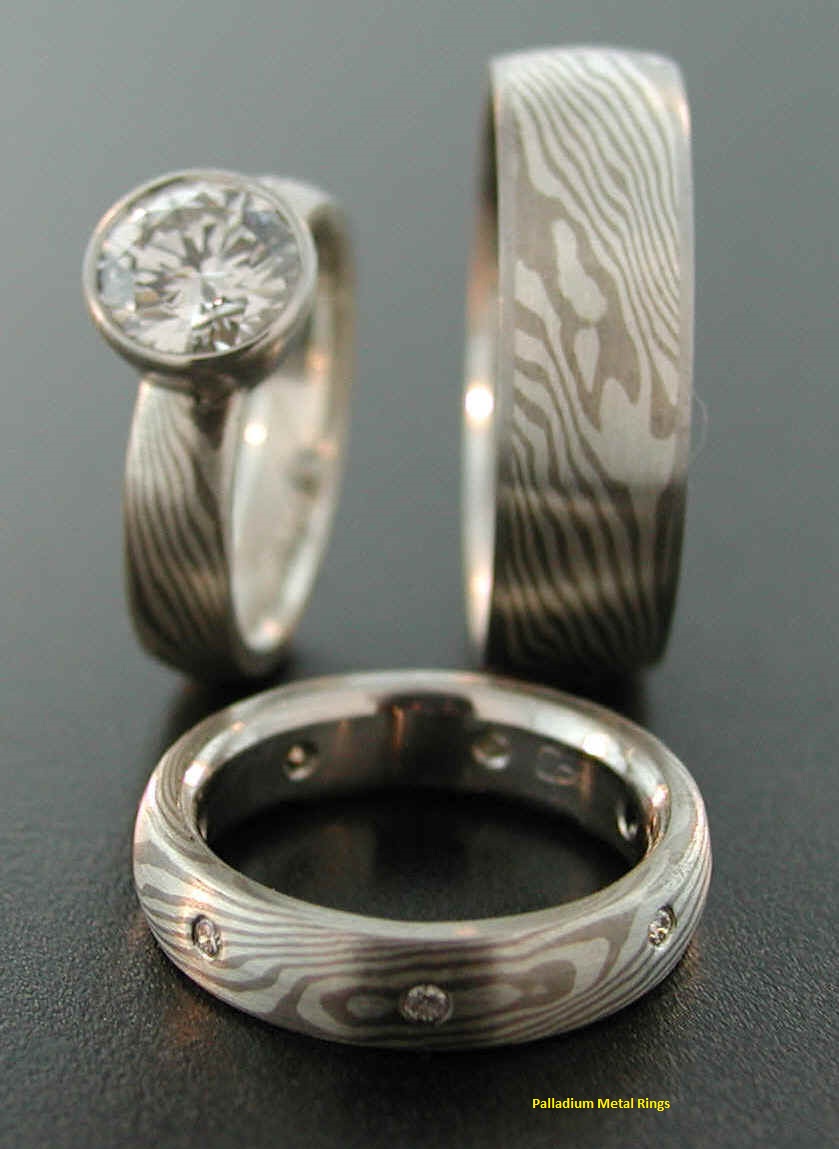Palladium
Palladium is a chemical element with the chemical symbol Pd and an atomic number of 46. It is a rare and lustrous silvery-white metal discovered in 1803 by William Hyde Wollaston. He named it after the asteroid Pallas, which was itself named after the epithet of the Greek goddess Athena, acquired by her when she slew Pallas. Palladium, platinum, rhodium, ruthenium, iridium and osmium form a group of elements referred to as the platinum group metals (PGMs). These have similar chemical properties, but palladium has the lowest melting point and is the least dense of them.
Palladium is a steel-white metal, does not tarnish in air, and is the least dense and lowest melting of the platinum group metals. When annealed, it is soft and ductile. Cold working increases its strength and hardness. It is used in some watch springs. It was named by Wollaston in 1802 after the asteroid Pallas, which had been discovered two months earlier. Wollaston found palladium in crude platinum ore from South America by dissolving the ore in aqua regia, neutralizing the solution with sodium hydroxide, and precipitating platinum as ammonium chloroplatinate with ammonium chloride. He added mercuric cyanide to form the compound palladium cyanide, which was heated to extract palladium metal.
William Hyde Wollaston noted the discovery of a new noble metal in July 1802 in his lab-book and named it palladium in August of the same year. Wollaston purified enough of the material and offered it, without naming the discoverer, in a small shop in Soho in April 1803. After harsh criticism that palladium is an alloy of platinum and mercury by Richard Chenevix, Wollaston anonymously offered a reward of 20 British pounds for 20 grains of synthetic palladium alloy. Chenevix received the Copley Medal in 1803 after he published his experiments on palladium. Wollaston published the discovery of rhodium in 1804 and mentions some of his work on palladium. He disclosed that he was the discoverer of palladium in a publication in 1805.
Over half of the supply of palladium and its congener platinum goes into catalytic converters, which convert up to 90% of harmful gases from auto exhaust (hydrocarbons, carbon monoxide, and nitrogen dioxide) into less-harmful substances (nitrogen, carbon dioxide and water vapor). Palladium is also used in electronics, dentistry, medicine, hydrogen purification, chemical applications, groundwater treatment and jewelry. Palladium plays a key role in the technology used for fuel cells, which combine hydrogen and oxygen to produce electricity, heat, and water.
Ruthenium, rhodium, palladium, osmium, iridium, and platinum together make up a group of elements referred to as the platinum group metals (PGM). At room temperatures the metal has the unusual property of absorbing up to 900 times its own volume of hydrogen. Hydrogen readily diffuses through heated palladium and this provides a means of purifying the gas.
It was named by Wollaston in 1802 after the asteroid Pallas, which had been discovered two months earlier. Wollaston found palladium in crude platinum ore from South America by dissolving the ore in aqua regia, neutralizing the solution with sodium hydroxide, and precipitating platinum as ammonium chloroplatinate with ammonium chloride. He added mercuric cyanide to form the compound palladium cyanide, which was heated to extract palladium metal.
Hydrogen easily diffuses through heated palladium; thus, it provides a means of purifying the gas. Membrane reactors with Pd membranes are therefore used for the production of high purity hydrogen. Palladium is a part of the palladium-hydrogen electrode in electrochemical studies. Palladium(II) chloride can oxidize large amounts of carbon monoxide gas, and is used in carbon monoxide detectors.
Palladium readily absorbs hydrogen at room temperatures forming palladium hydride PdHx with x below 1. While this property is common to many transition metals, palladium is unique by the high absorption capacity and by that it does not lose its ductility until high x values. This property has been investigated for designing an efficient, yet inexpensive hydrogen storage material (palladium itself is prohibitively expensive for this purpose).

 Alloy Suppliers
Alloy Suppliers
 Aluminum
Aluminum
 Aluminum Extrusions
Aluminum Extrusions
 Copper-Brass-Bronze
Copper-Brass-Bronze
 Nickel
Nickel
 Magnets
Magnets
 Stainless Steel
Stainless Steel
 Stainless Steel Tubing
Stainless Steel Tubing
 Steel Service Centers
Steel Service Centers
 Titanium
Titanium
 Tungsten
Tungsten
 Wire Rope
Wire Rope